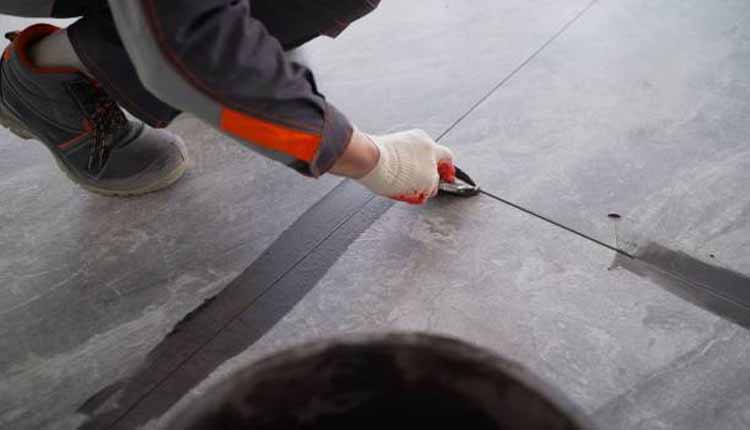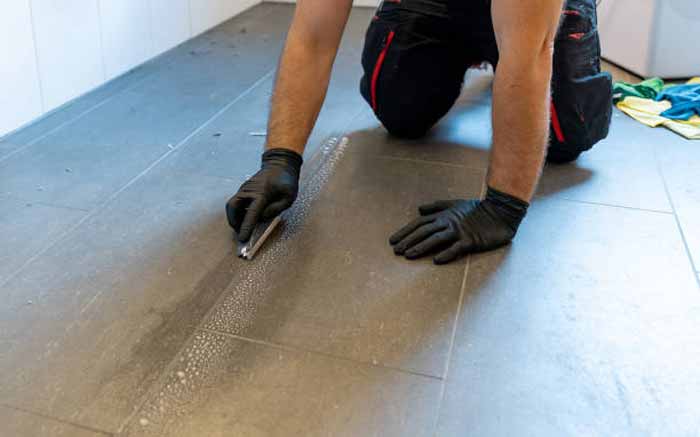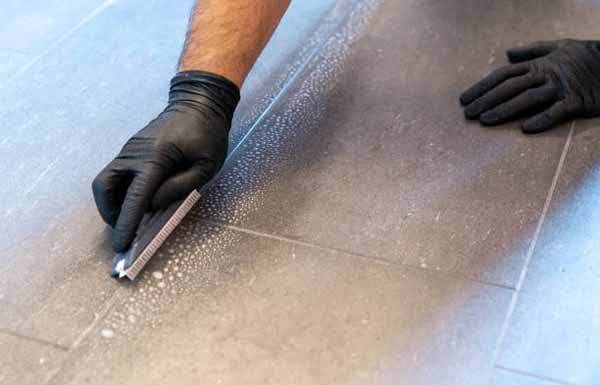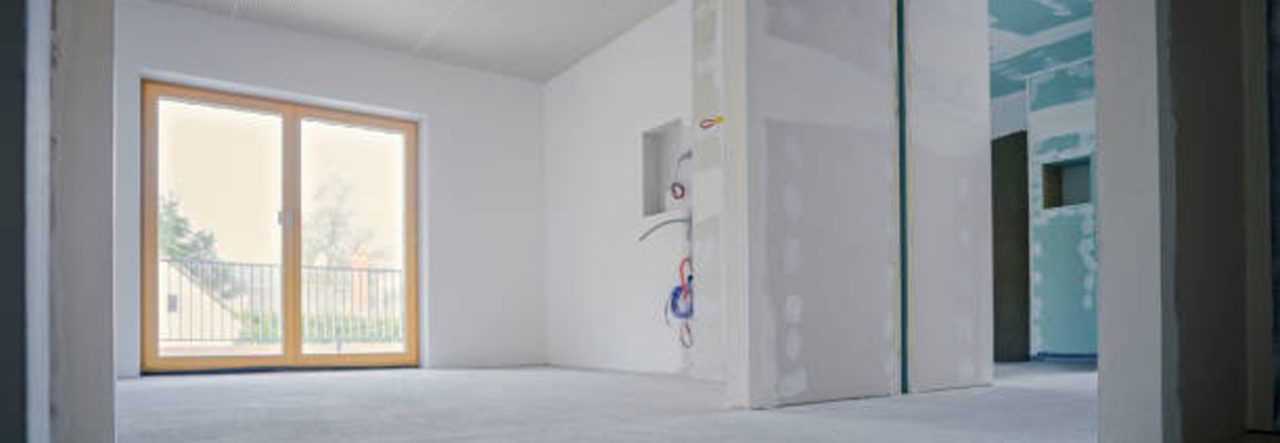
Drywall dust is a common problem in many homes, but it can be especially difficult to remove from black grout. Getting rid of the drywall dust that has settled into your black grout can seem impossible.
You don’t want to use harsh chemicals or scrub too hard and damage the tile, so what do you do? Fortunately, you can take some simple steps to effectively remove drywall dust from black grout without damaging the surface or leaving behind residue.
With just a few household items and some elbow grease, your floors look good as new in no time. Check out HandyWorkshop to get everything about Drywall .
Steps on How to Get Drywall Dust Out Of Black Grout

Drywall dust can be an eyesore, but you don’t have to call a professional to clean your floors. Follow these steps to remove dust from your black grout:
Identify the Problem
Identifying the problem of drywall dust in black grout is an essential step before attempting to clean it. Sometimes, drywall dust is difficult to remove and requires extra effort when cleaning.
It’s essential to determine the severity of the buildup and whether it requires professional help. If you decide that you can handle the task yourself, make sure to have all the necessary materials on hand before beginning.
You should also wear gloves, safety glasses, and a respirator if available, as dust from drywall is hazardous if breathed in.
Additionally, ensure any electrical items are turned off or unplugged before starting and that you clear away any furniture or other items from the area, so they don’t get covered in dust.
Gather Supplies
Gathering the right supplies is essential for proper drywall dust removal. You will need a vacuum cleaner attached to a long hose and an extension cord; a broom with stiff bristles; an old toothbrush; microfiber cloths; warm water; white vinegar; baking soda; dishwashing liquid; and rubber gloves.
Using a vacuum with a long hose attachment allows you to reach corners and crevices where the drywall dust has settled. This will help loosen up some of the debris, which can be brushed away more quickly.
RELATED ARTICLE: How to Bring Drywall to the Basement
Using a stiff-bristled broom helps agitate stubborn bits of drywall dust that accumulate over time and may be harder to remove with just vacuuming alone. An old toothbrush can help scrub stubborn dirt from small grout lines or harder-to-reach places where regular brushes cannot reach efficiently.
Microfiber cloths are highly absorbent and perfect for wiping down surfaces after vacuuming or brushing has occurred, while warm water helps add moisture to assist in loosening any remaining particles of dirt or debris that weren’t picked up by the vacuum cleaner or brush.
Vacuum Up Loose Dust
Once all necessary supplies are gathered, start by vacuuming loose dust using your long hose attachment (you may want to use an extension cord). Ensure all appliances are unplugged first, and then focus on areas where debris has collected, such as corners and crevices between tiles or near door frames/baseboards that were blocked by furniture when previously cleaned.
Move slowly over each surface several times until no more visible amounts of drywall residue remain this should take about 10 minutes, according to how much was present initially. Be sure not to forget any spots that may have been missed due to furniture blocking them from view.
Continue through each room, ensuring all surfaces are well vacuumed up to the point where there is no more visible drywall residue anywhere in sight this should take approximately 30 minutes, depending on how large/dirty your home is.
Brush Away the Remaining Dust

After vacuuming up loose pieces of dried wall material, sweep away remaining particles with a broom using its stiff bristles to agitate those hard-to-reach spots where dirt might have settled into cracks around tiles and baseboards/doorframes (where furniture had been blocking these areas previously).
Again begin slowly dusting each surface several times until no more dirt remains this should take about 15 minutes, depending on the amount of dirt left behind after vacuuming up what initially presented itself.
If there are still noticeable amounts of dirt left behind even after sweeping, try using an old toothbrush to get into those tighter spots usually missed by regular brushes properly this should only take about 5 minutes total.
Wipe Down Grout Lines
Now it is time to clean between tiles using microfiber cloths soaked in warm water mixed with either white vinegar (for tougher stains) or baking soda (for milder ones).
Start by soaking one end of your clothes into the mixture, then gently scrubbing along each line while pressing slightly against tile edges this should remove most buildups but may require multiple passes depending on stain severity level.
ALSO READ: Is it Ok to Drywall Walls before the Ceiling
If needed, use dish washing liquid instead for additional power when tackling tough grime just make sure not to use too much water pressure during the process as this could damage the grout itself.
Once complete, let surface air dry completely before moving on to the next section/room this could take anywhere from 30 minutes to 1 hour, depending on the amount of coverage being cleaned and air circulation levels within the space itself.
Let the Floor Dry Completely
After wiping grout lines well with a damp microfiber cloth soaked in warm water and vinegar or baking soda (or both if needed), allow the flooring itself time enough so that it dries completely before taking further steps towards maintenance It may take up to a few hours depending on the extent of cleaning and level of dampness.
If the area is still wet, it can cause an accumulation of dust once again, as well as promote the growth of mildew. To ensure that all moisture is removed from the black grout, consider using a fan to circulate air or open windows and let the air flow naturally.
Once the floors have dried completely, you can perform a routine grout cleaning and sealing procedure as needed. This should help to protect it from stains, dirt, and buildups in the future.
And, of course, always vacuum up any dust that may accumulate over time, preferably with the attachment for a long hose to ensure that your floors look as great as ever.
Conclusion
Now that you know drywall dust can be removed from black grout, you can keep your grout looking clean and beautiful. Different techniques may work better in different scenarios, so it’s best to experiment with a few to find the one that works for you.
Don’t forget to use protective gear when dealing with chemicals and other materials and adequately ventilate the area. With patience and effort, you can easily maintain grout to keep it looking new.
